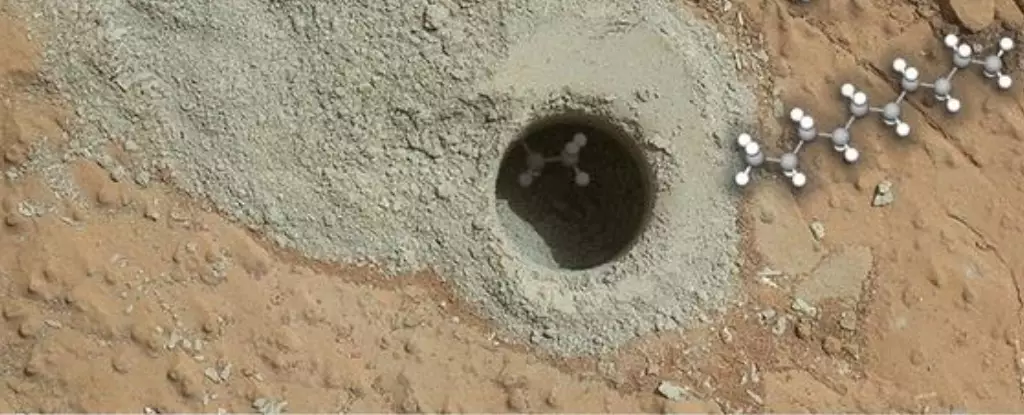Recent findings from NASA’s Curiosity rover have sparked intrigue and excitement in the scientific community with the detection of carbon chains stretching across a dozen atoms. These discoveries draw attention to the ancient lakebeds of Mars and enhance our understanding of the planet’s environmental history. The research, spearheaded by analytical chemist Caroline Freissinet from the French National Centre for Scientific Research (CNRS), underscores the significant role these carbon compounds might play in our quest to unravel whether life ever flourished on the red planet.
At the heart of these findings is a sampling instrument onboard the Curiosity rover that has been meticulously analyzing sedimentary rocks within Gale Crater. Among the recent discoveries are not just the carbon chains but also various organic compounds that hold tantalizing implications about Mars’s biochemistry. Even though these compounds can be formed through non-biological processes, their presence raises compelling questions about the planet’s potential to support life.
The Science Behind the Discovery
The process of uncovering these carbon chains involved a sophisticated experimental methodology aimed at analyzing mineral samples obtained from a mudstone deposit known as Cumberland. The researchers employed a gas chromatography-mass spectrometry technique while using a chemical enhancer to eliminate combustion risks during testing. The samples were exposed to extreme temperatures of approximately 850°C (1,562°F), which facilitated the careful decomposition of the deposits. Through these precise conditions, the team successfully identified minuscule concentrations of saturated hydrocarbon chains, specifically in the forms of decane, undecane, and dodecane.
Interestingly, the laboratory’s replicated Mars-like conditions demonstrated how simpler organic compounds, such as benzoic acid, could give rise to these longer carbon chains. This insight strengthens the possibility that such compounds may once have existed in Martian mudstone, suggesting that these structures may not solely be the result of abiotic reactions but might also hint at biological processes. The implications of such findings are enormous, as they suggest pathways for life even in environments previously deemed inhospitable.
Broader Implications for Astrobiology
The potential significance of these long carbon chains extends far beyond mere chemical curiosity. As the lines between life and non-life blur in the search for biosignatures on Mars, these findings could guide future missions and investigations. Curiosity’s mission underscores an essential goal: to seek evidence of past life forms, or at least the conditions under which life could thrive. With every analysis of Martian soil, we glean more insight into Earth’s neighbor’s conditions and whether they can harbor or have ever harbored life.
The research team’s assertion that the carbon compounds’ provenance and distribution are essential in the quest for potential biosignatures speaks volumes about the implications of their findings. Just as carboxylic acids serve as foundational elements of life on Earth, their potential counterparts in Martian sediments compel us to reevaluating the fundamental building blocks of potential extraterrestrial life. If life existed on Mars, these compounds might represent the remnants or predecessors of more complex molecules driven by biological processes.
Looking Ahead: The Path to Understanding Martian Life
While the current technology has allowed us to scratch the surface of Martian chemistry, we remain in the early stages of understanding the planet’s profound mysteries. More elaborate exploration missions will inevitably be required to discern whether these carbon structures are artifacts of biological activity or merely coincidental constructs of geological processes.
However, this uncertainty is not a deterrent; it is a call to action. Each discovery fuels excitement and an eagerness to delve deeper into the Martian landscape. There is something inherently wondrous about contemplating the prospect that these intricate carbon chains could once have been part of a life form – an echo of life on a distant world. As we continue to uncover Martian secrets, we must remain open to possibilities and questions that challenge our current understanding. Ultimately, the allure of Mars lies not just in answering the question of whether life ever existed there, but also in deepening our comprehension of life itself across the cosmos.


Leave a Reply